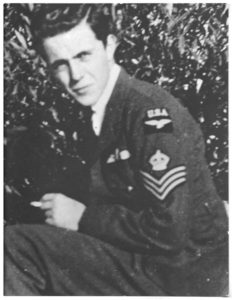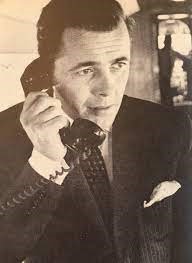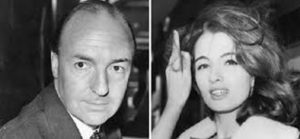I remember clearly the exact moment I met the most interesting man in the world. It was 1994 and I was working for Kroll Associates in their glamorous Savile Row offices in London.
Kroll was founded in New York in 1972 by the legendary Jules Kroll, a former Manhattan Assistant District Attorney. Recognised as founding the modern corporate investigations industry, by the ’80s the rapidly growing Kroll empire was also profiling investors, suitors, and takeover targets for its clients as a crucial part of the burgeoning M&A (mergers and acquisitions) business. In the ’90s, it expanded into forensic accounting, asset tracing and recovery, hostage negotiating, executive protection services, electronic data recovery and market intelligence. It was a fascinating and exciting place for this greenhorn ex-RAF Officer to find himself.
I had been headhunted (imagine how flattering that felt) to establish their first computer security consultancy in Europe. I was surrounded by experienced, exotic operators of every imaginable investigative trade from around the world. I shared an office with an ex-Commander of Scotland Yard’s Flying Squad – I was sat next to the Sweeny, for goodness sake. I loved it all and felt very privileged to be part of this intriguing and mysterious world.
One morning, I was making coffee in the small kitchen when a slight, grey-haired elderly man came and stood very close to me. He smelled of aftershave and cigars. He was dressed impeccably in an expensive suit, minus the jacket but with huge braces and arm bracelets. His cufflinks were obviously gold and very heavy. His shoes gleamed. His face was friendly and his eyes warm. He stood slightly shorter than me. His hands were perfectly manicured. I remember all this so clearly, as if it yesterday, although it was more than a quarter of a century ago.
“You must be the Wing Commander,” he said quietly, with an American drawl and a gravelly voice that told of a lifetime of smoking.
“No,” I replied. “I never made that rank; I retired as a Squadron Leader.”
“Well, Wing Commander,” he said, moving even closer into my personal space. “My name is Tom Corbally. I won’t tell them you were never a Wing Commander if you don’t tell them I never flew Spitfires in the Battle of Britain!”
Wow, what an opening line! Obviously tailor-made to get my attention. With a broad smile and a tap on my shoulder, he was gone – but already I was totally under his charismatic spell.
Tom would pass through the office from time to time, his chauffeured limousine parking for hours on the double yellows outside but somehow never attracting a single ticket. He always popped his head around my door to check in with me and forever just called me ‘Wing Commander’.
Over the years, I learned more about him. His was a life unlikely ever to be lived again, and most of it will remain untold in the shadows.
The life of Tom Corbally
I am indebted to Eamon Javers for his fascinating article in Buzzfeed, which filled many of the gaps in my knowledge (read it, it’s fascinating). Eamon describes Tom as ‘The Original Most Interesting Man In The World’ and ‘a private investigator whose career crisscrossed continents and spanned decades, is its own secret history of the 20th century’. During the course of his long and amazing career, Tom worked as a spy for the US Government, was friends with royalty, and gathered corporate intelligence for some of the wealthiest businesses. He was known as a loyal friend, a diplomat, and problem solver, with a hugely comprehensive little black book of contacts. He spoke several languages fluently. He made and lost fortunes, refusing to play by society’s rules and making a good living by doing others’ clandestine work.
Thomas J. Corbally was born in Newark, New Jersey, on 25 March 1921. His family operated a private investigative firm, The Corbally Detective Agency, and he grew up surrounded by gangsters, politicians, cops and private detectives. At the young age of six, Tom was kidnapped in order to persuade his father to repay an outstanding debt (Tom was returned later in the day, scared but safe). As a teenager, he worked in the family business, learning his basic trade and becoming streetwise beyond his years. Next, he stowed away on a series of cruise liners to explore the world, mixing with the glamorous elite and gaining a lifelong taste for the good life. In later years, he maintained that he was the basis of the character Jack in Titanic.
At the outbreak of World War II, Tom ran off to Canada to enlist in the Royal Canadian Air Force before the US joined the conflict. But he proved entirely unable and unwilling to knuckle down to the discipline of military life. He got into fights, repeatedly went AWOL, refused to march on parade, and was finally discharged.
At perhaps the darkest hour of the war, when the free world was fighting for its survival in the face of the Nazi threat, the RCAF ruled that they stood a better chance of victory without Tom’s help than with it: “This man is useless as far as aircrew is concerned.”
This episode may also explain Tom’s opening remark to me – many believed he had been a fighter ace, possibly a tale spread by the man himself, but it seems he made sure to come clean with me from the start.
Details of Tom’s life get a little hazy for a while after that, but it is clear that he subsequently worked for the US Government in occupied Germany as an itinerant solo civilian agent gathering intelligence at the close of the war and in the earliest days of the Cold War. At the start of the ’50s, he threw himself into the international jet set, becoming a celebrity known for dating, both serially and concurrently, some of the most beautiful and famous women in the world. He was handsome and stunningly attractive to women. Indeed, he looked like a film star.
He married frequently, once for as little as three days. In the ’60s, he became a male model. He seemed to know everyone – film stars, presidents, corporate magnates, royalty. He seemed to have a photographic memory and never committed anything to paper.
By 1963, Tom was living in London and played a central role in the infamous Profumo scandal. The story is very well told in both the 1989 film Scandal and the 2019 BBC drama series The Trial of Christine Keeler.
The Secretary of State for War, John Profumo, was having an affair with Christine Keeler, a topless dancer who was also ‘seeing’ Soviet military attaché Yevgeny Ivanov. Tom was a close friend of Stephen Ward, the man who had introduced Profumo to Keeler. Ward also brought Ivanov to Tom’s flat. Given his unique position in the upper echelons of London society and his friendship with all the main players, Tom was able to sound the alarm within both the British and American governments about the impending crisis.
In the ’70s and ’80s, Tom honed his craft further and built his reputation as a private investigator par excellence, working for some of the most powerful and famous individuals and companies across the world, including Kroll Associates, as an independent contractor. In 1982, he married in Paris for a final and lasting time, to Renee Lucidi, with the service performed by future French president Jacques Chirac.
By the end of the ’90s, his health was declining and he died in 2004 at the age of 83. As Renee went through his effects, she discovered a safe-deposit box he’d held at Claridge’s Hotel – in the box, she found merely a packet of coffee creamer, a fake British passport with Tom’s picture but a phoney name, and a key. Was this his escape package, to allow him to flee if he needed? Nobody has ever identified what the key was for – as Javers concludes: “Somewhere out there, gathering dust in a small bank box, could be the last remaining secrets of the most amazing private investigator of the 20th century.”
And why the coffee creamer?
My last encounter with the great man
My time at Kroll lasted only a couple of years before I moved on to Standard Chartered Bank. Shortly before I left, Tom popped in to see me one last time to ask if I could help him buy ‘one of these darned new-fangled computer things’. I organised for a brand new, 10-inch black and white Toshiba tablet – a brick of a thing but leading-edge back in the day – to be delivered to his home in the States. He rang me a few days later, and for half an hour, I tried to explain how he should fire it up, log on and load up MS Word. The conversation didn’t end well. To be fair, it was a case of the partially-sighted leading the blind, and eventually he hung up in disgust and frustration.
A week later, the tablet was returned to me in London. I opened the packaging to find a bullet hole in the screen. Tom had shot the computer. Now, there’s not one of us who, at one time or another, hasn’t wanted to shoot our computer, but I now knew a man who had actually done it.
And what’s more, I wasn’t surprised.
Comment on LinkedIn

Read more of Martin's Log
Thank you for reading my blogs. I’m getting quite old now, and hopefully I’m a little wiser than I once was. I have enjoyed a fascinating career full of fascinating people, and made many great friendships. I’ve made huge errors in my lifetime, and enjoyed great success too – it’s been the ultimate game of snakes and ladders - up and down, round and round. It is my privilege to share some of my stories with you, and describe some of the lessons I’ve learned in the hope that it may both save you from falling into the same holes, and help you in your careers and lives. Good luck and good fortune.
More blogs




